
A blog focusing on 1/64 diecast from such popular brands as Hot Wheels, Matchbox, Johnny Lightning, M2 Machines, GreenLight, Tomica, Yat Ming, Majorette, MotorMax, Siku, Corgi, Guisval, Playart, Ertl, Zylmex, Racing Champions, & many more. Swifty's Garage features a daily Car Of The Day and news updates from your favorite brands!
Friday, December 17, 2010
Car Of The Day: December 17, 2010
Today's car of the day is Hot Wheels' 1975 Chevrolet Corvette.
The Chevrolet Corvette (C3) is a sports car produced by the Chevrolet division of General Motors for the 1968 through 1982 model years. Corvette chief Zora Arkus-Duntov wanted a striking new Corvette; although engines and chassis components were mostly carried over from the previous generation, its body and interior were new. "Though initially flawed, the 1968 like the 1958, would improve and mature into a car precisely right for its time." The so-called Shark was produced during one of the most troubled periods in America: civil unrest, burgeoning federal guidelines, fuel economy and pollution regulations, oil embargoes, rising fuel and insurance costs, runaway inflation, and a lingering recession. Through it all the C3 continued to set new Corvette sales records with an all-time high of 53,807 produced for the 1979 model year.
For more information and pictures of the real car please visit: Chevrolet Corvette Stingray
Not the most accurate Corvette, but not bad for the time it was issued. The hood should have it's own area code.
The Corvette C3 was patterned after the Mako Shark II designed by Larry Shinoda. Executed under Bill Mitchell's direction, the Mako II had been initiated in early 1964. Once the mid-engined format was abandoned the Shinoda/Mitchell car was sent to Chevrolet Styling under David Holls, where Harry Haga's studio adopted it for production on the existing Sting Ray chassis. The resulting lower half of the car was much like the Mako II, except for the softer contours. The concept car's name was later changed to Manta Ray. The C3 also adopted the "sugar scoop" roof treatment with vertical back window from the mid-engined concept models designed by the Duntov group. It was intended from the beginning that the rear window and that portion of the roof above the seats–be removable.
The "Shark" has the distinction of being introduced to the motoring public in an unorthodox — and unintended — fashion. GM had tried their best to keep the appearance of the upcoming car a secret, but the release of Mattel's die-cast Hot Wheels line several weeks before the C3's unveiling had a certain version of particular interest to Corvette fans: the "Custom Corvette", a GM-authorized model of the 1968 Corvette.
1968 engines were carried over from the previous generation. The optional automatic transmission was the new 3-speed Turbo Hydramatic. Coupes had removable T-tops and rear window. Side vent windows were eliminated from all models. Sting Ray nameplates were absent on the new 1968 body, but Chevrolet still advertised the car as a Sting Ray. Rare options: L88 engine (80), J56 heavy-duty brakes (81), UA6 alarm system (388), L89 aluminum heads (624).
In 1969 displacement of small block engines increased from 327 cu in (5.4 L) to 350 cu in (5.7 L). 1969 models featured 8-inch-wide (200 mm) wheels (increased from 7 inches), front fender "Stingray" nameplates, all black front grilles, optional side exhausts and front fender vents trim, and revised door panels for additional shoulder room in the C3's tighter cabin. An extended production cycle increased volume. The ZL1 option was offered, with an all aluminum 427 cu in (7 L) big-block engine listed at 430 hp (321 kW). Rare options: ZL1 aluminum block (2), J56 heavy-duty brakes (115), L88 engine (116), L89 aluminum heads (390).
1970 was the first model year for the fender flares designed into the body contours which reduce wheel-thrown debris damage. New were egg-crate grills, larger squared directional lamps, and new fender vent "grills". The 427 cu in (7 L) big-block was enlarged to 454 cu in (7.4 L). The new solid-lifter 370 hp (276 kW) LT1 small-block engine was introduced and a special ZR1 package added racing suspension, brakes and stabilizer bars and other components to the LT1 engine. Interiors were tweaked with redesigned seats and a new deluxe interior option combined wood-grain wood accents and higher-spec carpeting with leather seat surfaces. Four-speed manual transmissions became standard. A short model year resulted in a disproportionately low production volume of 17,316, down nearly 60%. Rare options: ZR1 special engine package (25), shoulder belts in convertibles (475), LT1 engine (1,287).
1971 engines were detuned with reduced compression ratios to tolerate lower octane fuel, but the new LS6 454-cid big-block engine still delivered 425 hp (317 kW), highest of the 1970-72 series. The ZR1 option combined special racing components with the LT1; ZR2 added these components to the LS6. Body and chassis were carried over from 1970. This was the last Corvette with fiber optics light monitoring. Rare options: ZR1 special engine package (8), ZR2 special engine package (12), LS6 425-hp engine (188), shoulder belts in convertibles (677).
1972 was the last year for chrome bumpers front and rear, and the removable rear window common to all 1968-72 Coupes. the LT1 engine and ZR1 racing package built around it continued, but the ZR2 big-block package was discontinued. The 1972 LT-1 could now be ordered with air conditioning, a combination not permitted the two previous years. In 1972, SAE net measurement for power was now utilized (away from the previous SAE gross standard), which resulted in lower values expressed in HP further reducing power ratings down to 200 hp (149 kW) on the standard 350 small block offering. Rare options: ZR1 special engine package (20), shoulder belts with convertibles (749), LT1 engine option (1,741). Convertibles were a vanishing breed by 1972, and the Stingray was no exception. It sold only 6,508 copies, amounting to 9% of the market, placing it number three; it was beaten by the number one-selling Cutlass Supreme, with 11,571, but beat the Impala's 6,456 and the Mustang's 6,401.
1973 started Corvette's transformation from muscle to touring sports car. A Chevrolet advertisement headlined: "We gave it radials, a quieter ride, guard beams and a nose job." Indeed, redesigned body mounts and radial tires did improve Corvette's ride, and interior sound levels were reduced by 40%. The chrome blade front bumper was dropped for the federally required 5 mph (8.0 km/h) standard for a light-weight front bumper system with an inner transverse tube attached to the frame with two Omark-bolts-(special steel fasteners which absorbed energy when a forming die, pushed back by the bumper, was forced down their length), and an injection-molded urethane bumper cover. The urethane nose was chosen over Chevy's other alternative, a more protruding version of the previous metal bumper. The base L-48 engine produced 190 hp (142 kW); The L-82 engine was introduced as the optional small-block engine (replacing the LT-1 engine) and produced 250 hp (186 kW); the 454 big-block engine produced 270 hp (201 kW). The domed hood design was new and included rear air induction which increased power (but didn't show up in the horsepower ratings), and cut 0-60 times by a second while keeping the engine compartment cooler. An aluminum wheel option was seen on 1973 and 1974 pilot cars, and a few 1973s were so equipped, but withheld for quality issues, and wouldn't be available until 1976.
Road & Track magazine stated in a 1973 road test: "For all its age, size and compromises, if the Corvette is equipped with the right options it is a pleasant and rewarding car to drive and this 1973 example was one the best Corvettes we've ever driven."
Hi-Performance Cars magazine in a L48, L82, and LS4 comparison test, September 1973, said: "Our choice for the all-around best performer must go to the base 350 L48 engine...The L48 delivers all the acceleration you'll ever need on the road in a steady, forceful manner...in addition it runs cool, idles smoothly, and can cruise all day at 100 mph (160 km/h). The L48 took 6.8 seconds to reach 60 mph (97 km/h), the L82, 6.7 seconds and the LS4 454, 6.4 seconds. On the Bridgehampton road course and over the ride and handling course at Suffolk County Raceway, the base L48 coupe was again our choice...the L-82 had the same balance as the L48 but if we weren't at the right rpm through a corner, or in the wrong gear, the (L82's) lack of torque made itself felt once again...the L48 was the best balanced of the three." In conclusion, they stated: "The Corvette as a total concept has always been far more than the sum of its individual parts. The fanatical clientele that buys 30,000 of them a year can attest to that. And we'll attest to the fact that after 20 years, the Corvette is more than going strong. It's still the epitome of the American motoring experience."
For 1974, a body-color rear end finished the job Chevy started in 1973. A new bumper system replaced the squared tail and chrome rear bumper blades introduced in 1968 with a trim, tapering urethane cover carrying an integral license plate holder and recesses for the trademark round taillights. Underneath sat a box-section aluminum impact bar on two Omark-bolt slider brackets similar to the system used in the nose which allowed the Corvette to pass federal five-mph impact tests at the rear as well as the front. The new rear design was quite beautiful, and more up-to-date than the 60's shape that it replaced with the vast majority of enthusiasts embracing the new design. For the 1974 model only, casting limitations mandated left and right bumper covers with a vertical center seam.
Car and Driver magazine said: "...We think the front and rear together produce a 'molded' shape that speaks of function rather than decor."
The standard L-48 engine's horsepower increased to 195. A 1974 Stingray equipped with the L48 195 hp (145 kW) small-block was capable of 0-60 in 6.8 seconds; comparable to the 6.5 second time of the 1968 small-block rated at 300 hp (224 kW); proof the 1972-74 Corvette engines had ample power regardless of the reduced horsepower ratings. Tailpipes were now down-turned as the new bumper cover eliminated the tailpipe extensions. Resonators were added (1974 only) to the dual exhaust system which helped quiet the interior. The radiator and shroud were revised for better low-speed cooling, and the air conditioning system was improved. The inside rear-view mirror was increased to 10 inches (250 mm) in length, and lap and shoulder seat belts were now integrated in coupes. 1974 was the end of an era for the Corvette. It was the last year with a true dual exhaust system, the last without a catalytic converter, and the last 454 big-block engine offered in a Corvette.
Hot Rod magazine in its March 1986 issue selected the 1973-74 Corvette LS6 454 as one of the "10 most collectable muscle cars" in the company of the 1968-70 Chevelle, 1970 'Cuda, 1970 Challenger, 1966-67 Fairlane, 1968-70 AMX, 1970 Camaro Z28, 1968-70 GTO, 1968-69 Charger, and 1967-68 Mustang. The big-block Corvettes were the only muscle cars produced after 1970 worthy of the list.
The 1975 model was advertised as "a more efficient Corvette", as electronic ignition, and the Federally mandated catalytic converter were added and service intervals extended, but power bottomed out this year — the base engine producing only 165 hp (123 kW). The optional L82 engine produced 205 hp (153 kW). 75's featured revised inner bumper systems, molded front and rear "painted" bumper guards, and a new one piece urethane rear bumper cover. This was the last convertible for the 1968-82 third-generation. Anticipating safety restrictions, Chevrolet believed it would be Corvette's last soft-top model ever, but a convertible returned in 1986. Starting this year, tachometers were electronically driven.
Car and Driver recorded a respectable 7.7 second 0-60 time in a 1975 base engine-automatic, making the Corvette still one of the fastest cars available at the time. C&D said: "The Corvette feels highly competent with power-everything to help you guide the long body around..."
1976 models featured steel floor panels shielding the catalytic converter exhaust, weighed less than the previous fiberglass floor, and further reduced interior noise levels. Horsepower rose to 180 hp (134 kW) for the base L-48 engine; 210 hp (157 kW) for the optional L-82. The rear air induction was dropped in favor of an air cleaner ducted to the lower grill area to reduce induction noise. (The hood was carried over with its induction system non-functional). The 8-inch-wide (200 mm) aluminum wheels were now available, and a new rear nameplate for the rear bumper cover was featured, eliminating the Corvette letters used since 1968. An un-welcome change was the "Vega GT" 4-spoke steering wheel, although its smaller diameter did provide extra room and eased entry/exit. The steering wheel, color keyed-to-the-interior, continued on 1977 thorough 1979 models limited to non-tilt wheel cars only. Without a convertible model, the Corvette still set new sales records.
Car and Driver recorded 6.8 second 0-60 times in both L-48 and L-82 4-speed equipped 1976 Corvettes. The magazine ordered an L-48 4-speed for a 4,000-mile (6,400 km) road trip to Alaska. C&D summarized: The Corvette was a big hit–we expected and thoroughly enjoyed that–but we were surprised at how well it withstood the ordeal...once we recovered from the trip we conceded that we'd developed new respect for a car we'd long regarded as something of a put on. In every sense of the word, our Yukon Corvette proved to be tough and we'd have to say that even the production versions impressed us as coming closer to being real touring cars than we might ever have thought. There's a lot more sincere ring now to our stock answer to the question, Why a Corvette?"
1977 saw the steering column repositioned 2 inches (51 mm) closer to the dashboard. The custom interior with leather seat trim was now standard, with cloth trim being optional. A redesigned console featured universal Delco radio options. Black exterior color returned (last offered in 1969). New cross-flags emblems replaced the Stingray nameplates on front fenders. 1977 was the final year of the "sugar scoop" tunneled roof-line and vertical back window.
Subscribe to:
Post Comments (Atom)
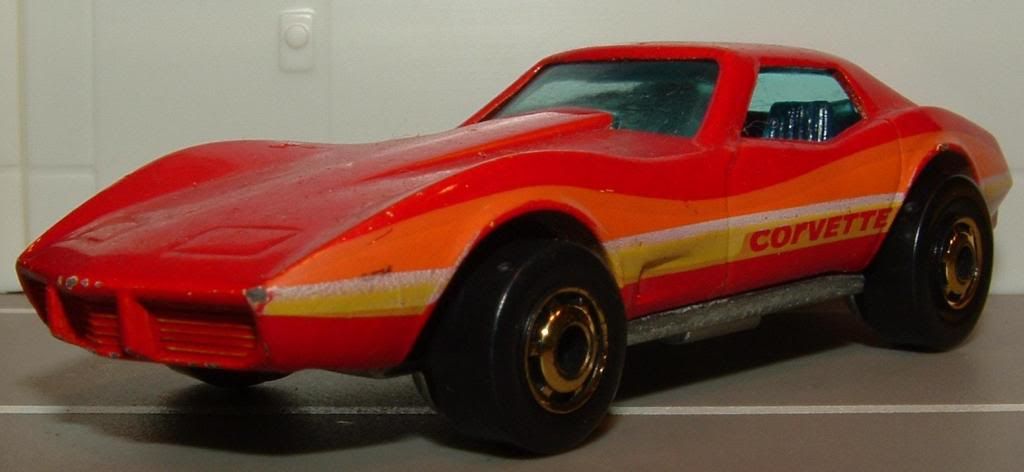
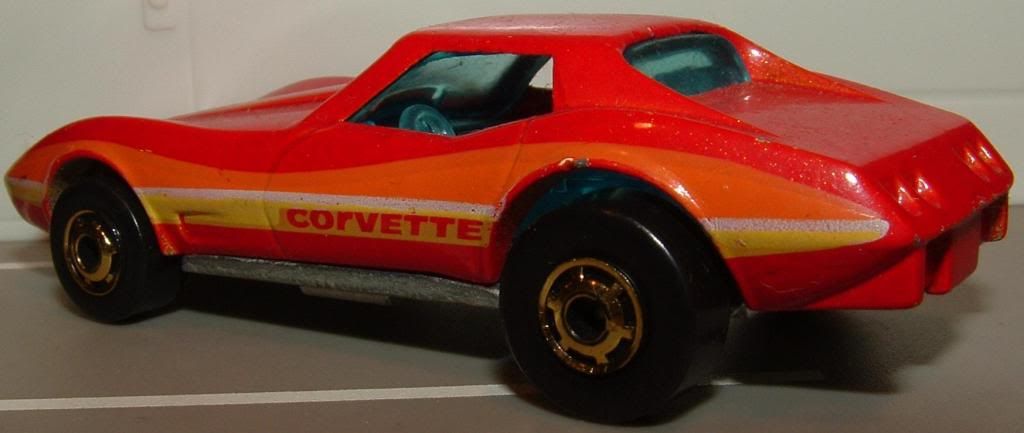
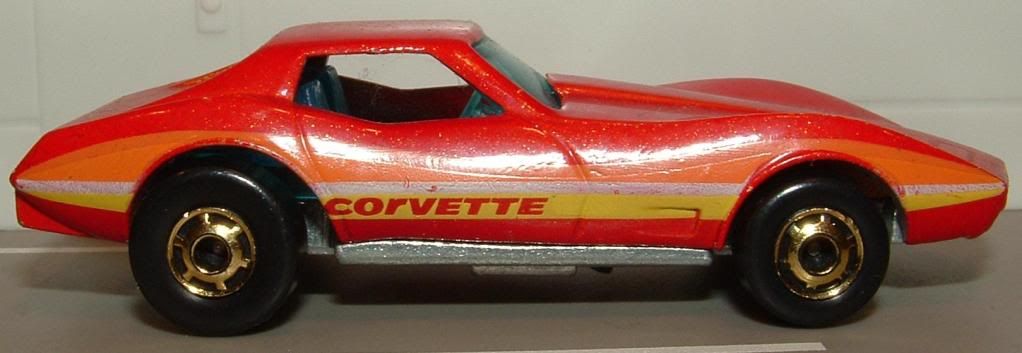

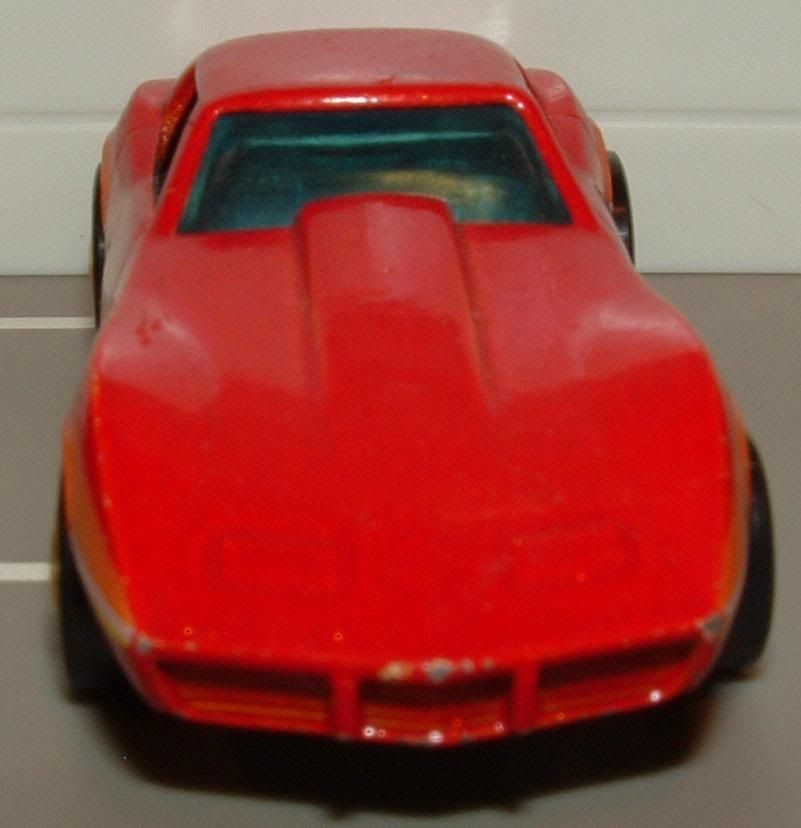
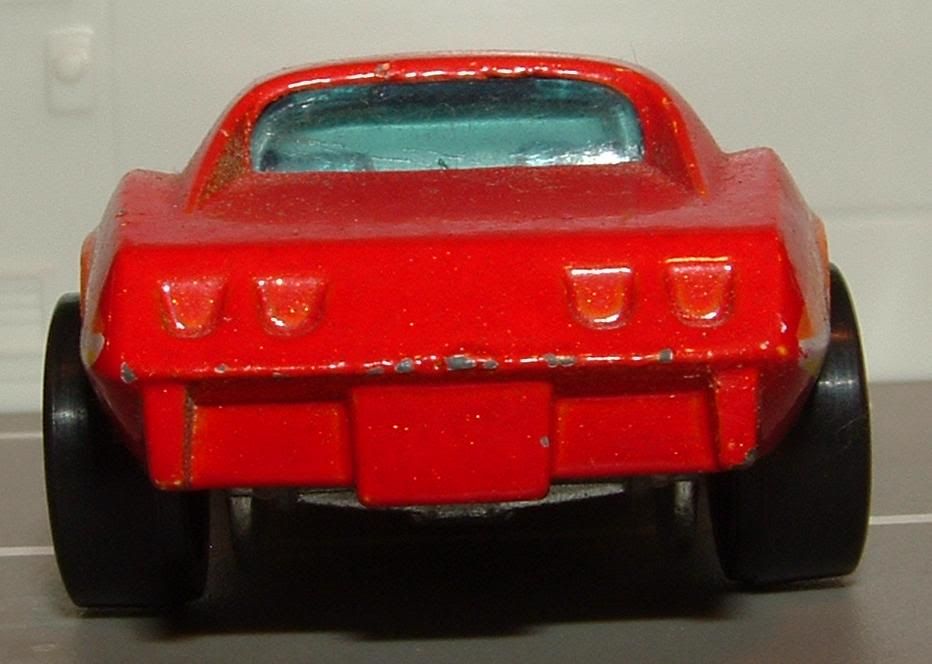
No comments:
Post a Comment